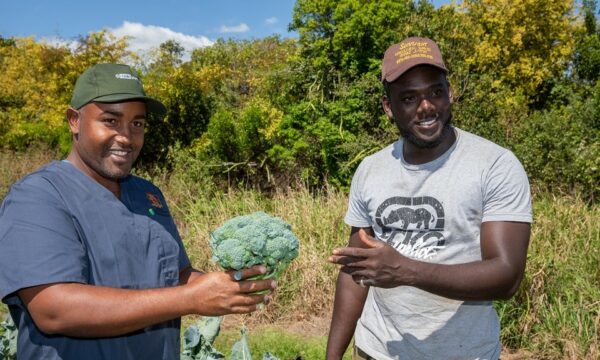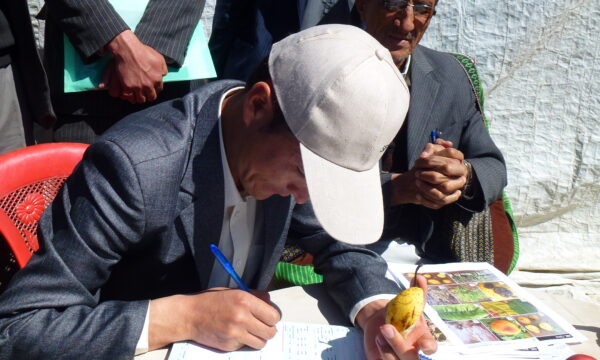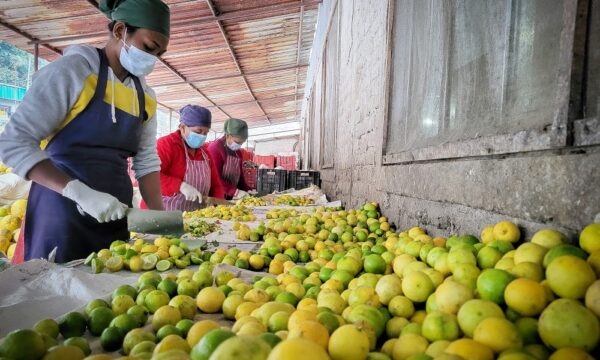Since 9/11 the number of invasive pests and plant diseases managing to slip into the USA has risen dramatically. Border checkpoints normally act as a first line of defence against these pests and diseases, however the increased emphasis on anti-terrorism measures has led to agricultural issues being ignored. This costs the USA a staggering $120 billion (approximately £75 billion) per year and is threatening some of the country’s most productive agricultural regions.
The increase in the number of invasive pests and plant diseases was triggered by an increased focus on anti-terrorism measures at the expense of agricultural protection. The biggest problem was the reassignment of hundreds of agricultural scientists to the newly-formed Homeland Security department after 9/11. This meant that instead of stopping invasive species at the border they were now involved in anti-terrorism duties. Many of the scientists resigned or retired and those that remained were replaced in the chain of command by officials with little knowledge of agricultural science.
Once an invasive pest or plant disease has entered a new region it can cause large amounts of damage and it is crucial to implement quarantine procedures to limit its spread and prevent it from establishing. Once established, invasive pests can be hard to eradicate which is normally due to their high growth rate in the absence of any natural predators.
The main way to stop invasive pests from entering the USA is at border checkpoints. However after 9/11 the nature of border checkpoints changed to focus more on terrorist threats, ignoring the dangers of travellers bringing foreign foods into the country. Some plants and cut flowers harboured invasive pests whilst fruits and vegetables ran the risk of being infected with plant diseases not found in the USA.
The invasive pests managed to establish themselves in productive regions such as California and Florida which have year-round warm climates. The Mediterranean fruit fly (Ceratitis capitata) has managed to establish itself in California, putting the state’s well-known citrus crops at risk. California’s $1.8 billion (approximately £1.13 billion) citrus industry is also at risk from the Asian citrus psyllid (Diaphorina citri) which has already decimated Florida’s orange groves. The Plantwise datasheet for D.citri describes it as causing defoliation and damaging plant growing points leading to dwarfing. This dwarfing leads to a decrease in the amount of juice per fruit and also makes the fruit less tasty.
The appearance of invasive pests is not the only worry, with some subsequent management programmes doing more harm than good. New Zealand’s light brown apple moth (Epiphyas postvittana) emerged in California and in 2008 prompted the government to spray the area with over 700kg of pesticides. The spraying is thought to have caused respiratory problems in the local community and killed many birds in the area. They spent over $110 million (approximately £62 million) in their failed attempts to eradicate the moth. The Plantwise light brown apple moth datasheet suggests that mate disruption, using sex pheromones, has been effective in the moth’s management in New Zealand and Australia.
There is some hope on the horizon though, as government officials are beginning to acknowledge these problems and take positive action to solve it. This includes the suggestion that agricultural scientists should be removed from the Homeland Security Department and allowed to focus once more on agricultural threats.
Read the original article on NY Daily News website.
Related News & Blogs
Plant clinics showcased at Harvest Money Expo in Uganda to help empower the country’s young smallholder farmers
The CABI-led PlantwisePlus programme showcased its plant clinics at the Harvest Money Expo in Uganda to help empower the country’s young smallholder farmers to grow more and lose less to potentially devastating crop pests and diseases. The Harvest Mone…
22 March 2024





